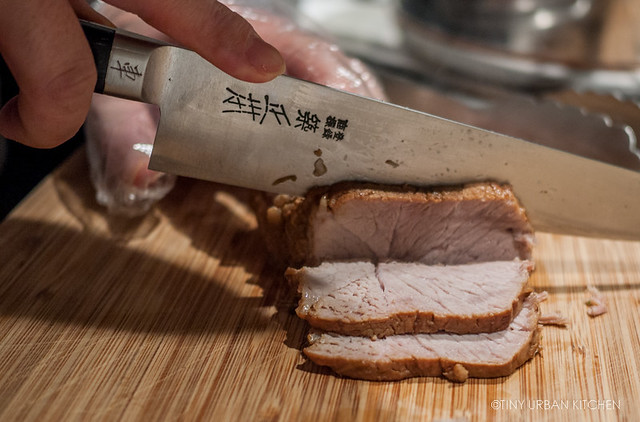
When asked by Eater Boston to "describe 2012 in one word" as part of the Friends of Eater interview series, my answer was simple: ramen.
Ramen has taken Boston by the storm. Ever since Guchi's Midnight Ramen made its debut just under a year ago, (wow, has it only been a year?), various restaurant have started serving ramen to try to meet the serious hunger for this dish. Yume wo Katare just opened at the end of 2012, and still boasts lines that average an hour or more. Uni Sashimi Bar started serving midnight ramen, as did Myers + Chang, Pigalle, and even Strip T's.
Though I've been to Japan countless times, I've mostly focused on sushi during my previous visits, and thus am woefully a noob when it comes to ramen.
My last visit to Japan I finally had a chance to see what the hype was about in Japan (where people have been lining up to eat good ramen for decades). I visited Rokurinsha, one of the most popular ramen places in Tokyo.
This post is not about Rokurinsha. You can read all about that experience here.
Instead, this post is about their "ramen kit" that I bought at the store. It's about how that one package of their specialty ramen kit catapulted me onto this crazy cooking journey where I ended up using both a sous vide machine as well as a pressure cooker in order to execute this "packaged" ramen.
Definitely one of the most time-consuming and elaborate "instant" meals I've ever made.

Rokurinsha sells ramen kits and vacuum sealed roasted pork right at the restaurant. That way, if you want to make their ramen at home, you can make a pretty good approximation. Since I was bringing this back to the U.S., I knew I couldn't bring the packaged pork. However, I did buy one package of the ramen kit so that Bryan could try it.

In Japan, it's not unusual to find "half-dried" noodles in the market. They aren't exactly fresh noodles, but they aren't quite completely dried either. I find these noodles to taste more al dente and chewy than traditional fully dried noodles. They typically have a shelf life of about 1-2 months, so you do need to cook them soon after you purchase them. They do dry out.

The Rokurinsha package came with these half-dried noodles, which I cooked for about 10 minutes in boiling water.

It's gorgeously al dente, and I would highly recommend that you pick some up if you are in Japan.

The soup base part of it was pretty straightfoward. Although the instructions were purely in Japanese, I was able to use a combination of the pictures, my crude knowledge of Japanese, and my medium knowledge of Chinese characters in order to figure out what the instructions said.

But it can't be that easy, can it?
Of course not! It wouldn't be on this blog if it were that straightforward. In order to bring this "instant" dish up several notches, the first thing I decided to do was to add a sous vide "onsen" egg. Onsen literally means "hot springs" in Japanese, and refers to these barely cooked eggs which still have a slightly gelatinous yolk. They are decadent and easily made in a sous vide machine.

Just dial the sous vide machine to around 63 °C (146 ° F) and cook for about 45 minutes (in the shell). Crack open the shell (just once using a sharp jab with a fork), and break open, releasing the velvety egg right into the soup.

I also made chashu pork shoulder using my nifty new pressure cooker, which resulted in beautiful, tender meat after cooking for only about 1-2 hours. Please click here for the recipe.

Finally, inspired by multiple sources, I decided to make 48-hour sous vide pork belly. According to the Modernist Cuisine at Home, pork belly can be cooked sous vide within a number of different temperature ranges and time (anything from 12 hours to 48 hours!) The resulting pork belly was gorgeously soft and tender, infused with soy, aromatics, and spices. Please click here for the recipe.

For an "instant" dish, this entire bowl of ramen took me three days to compete. There was a heck of a lot of planning, and (of course), lots of waiting.
The final product was awesome. Of course, we all know that the broth is the most important part, and in this case, I "cheated" because the broth was provided by one of the most famous ramen shops in Tokyo. However, having insanely tender pork belly, super soft and flavorful pork shoulder, and a luxuriously velvety egg didn't hurt one bit.


No comments :
Post a Comment